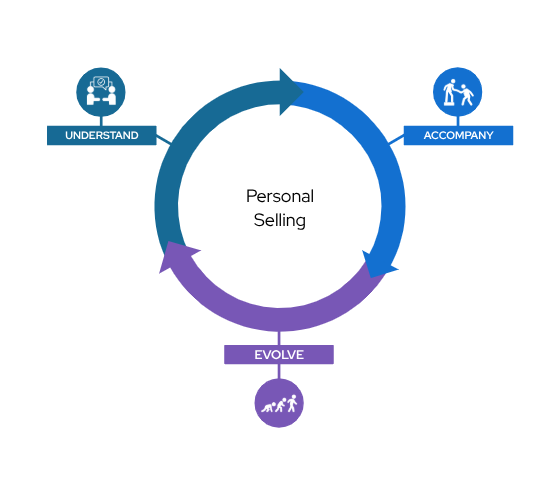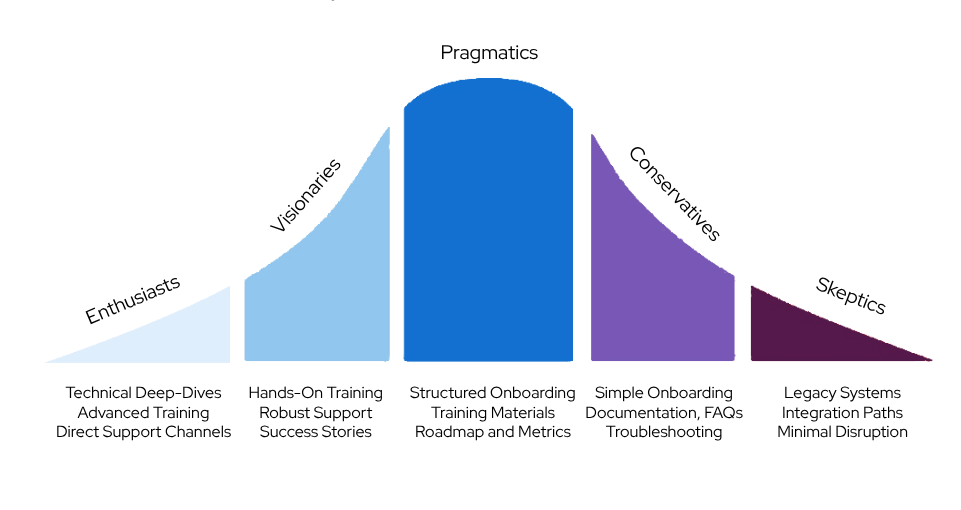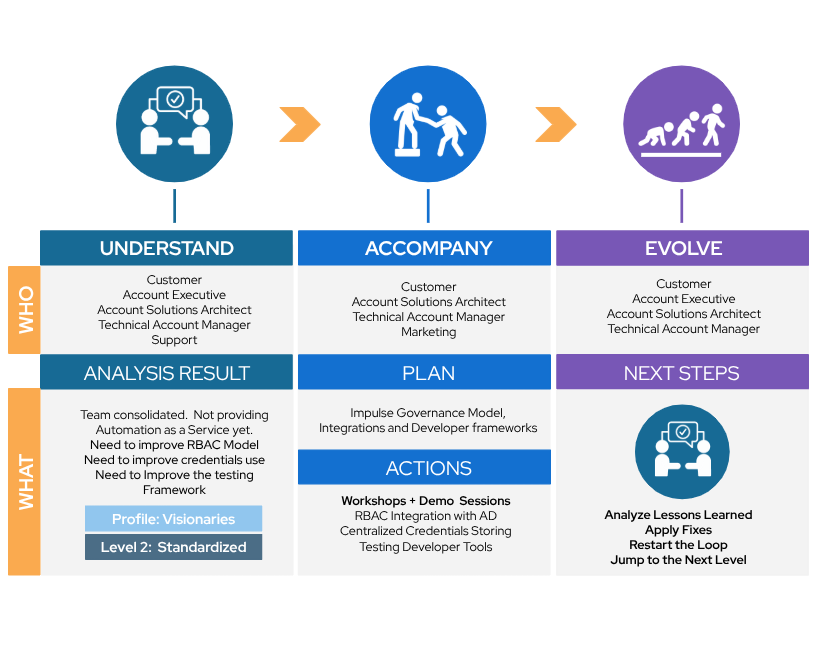In the world of digital transformation, building great products is only half the battle. The real challenge lies in ensuring they are adopted effectively. Product adoption is the bridge between potential and performance—it turns features into outcomes and technology into business value.
As an Ansible Technical Account Manager, I see this as the biggest challenge for my clients. The larger the organizations, the slower and more difficult it is to adapt to new work philosophies and the changes they require.
To succeed, adoption efforts must follow a natural progression: begin with understanding the needs, move into active collaboration, and continuously evolve through feedback and improvement.
Start with Understanding: Listen, Learn, Analyze
Ernest Hemingway once said: “When people talk, listen completely. Most people never listen.”
That’s the first step—genuinely listening.
Know Your Users: Profiles and How to Lead
Every organization is made up of different personas, each with unique attitudes toward technology. Understanding these profiles helps you tailor your approach:
-
Enthusiasts
Traits: Eager to explore new tech.
Engage with: Technical deep-dives, early feature access, direct engineering touchpoints. -
Visionaries
Traits: Strategic thinkers focused on transformation.
Engage with: Hands-on training, success stories, robust support. Show alignment with long-term goals. -
Pragmatists
Traits: Focused on ROI, wary of risks.
Engage with: Structured onboarding, training materials, proven roadmaps. Emphasize reliability and scale. -
Conservatives
Traits: Cautious, prefer mature solutions.
Engage with: Simple onboarding, FAQs, documentation. Prioritize stability and integration with existing systems. -
Skeptics
Traits: Distrustful of change.
Engage with: Troubleshooting support, minimal disruption, measurable benefits. Let evidence do the convincing.
Once you’ve mapped these personas, the next step is identifying promoters within each group—those who show initiative, influence peers, or have credibility in their domain. These individuals are invaluable allies.
Build an internal community with these promoters. Involve them early in the planning, give them leadership in workshops or demo sessions, and create a space where they can share experiences, troubleshoot, and advocate for the product. A well-connected internal community increases trust, accelerates adoption, and builds lasting momentum across teams.
Work Side-by-Side: Build, Deliver, Empower
With insights in hand, it’s time to act.
This stage is about developing and delivering a focused plan:
- Host hands-on workshops and demo sessions tailored to key needs.
- Improve core areas like governance, and integrations with the rest of the groups
- Reuse and adapt existing content to support learning at scale.
Collaborate with internal champions to run sessions and promote adoption organically across teams.
Reflect and Improve: Measure, Iterate, Advance
Albert Einstein put it best: “Success comes from curiosity, concentration, perseverance and self-criticism.”
A Technology Adoption Phases Practical Example
Once key milestones are reached, it’s time to pause, reflect, and improve:
- Run surveys and retrospectives with your internal team and the rest of the involved users.
- Ask what could have been done better.
- Apply lessons learned and prepare for the next phase of growth.
Adoption is not a “one-and-done” event—it’s a continuous improvement loop. By applying what you’ve learned, you can help the users climb the maturity curve, from basic usage to full optimization.
The Takeaway: Adoption Is a Team Effort
No single role owns adoption. It’s a collaborative effort between different teams.
To drive adoption:
- Understand the users current landscape and team dynamics.
- Tailor your approach based on the user profiles.
- Co-create solutions with key promoters.
- Use what’s already working—don’t reinvent the wheel.
- Always look back to move forward.
When you commit to this process, adoption becomes more than just training—it becomes transformation.


